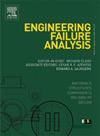Interfacial microstructure evolution and fracture mechanism of 6063 aluminum alloy joints vacuum brazed with Al-Si-Mg filler metal
IF 4.4
2区 工程技术
Q1 ENGINEERING, MECHANICAL
引用次数: 0
Abstract
This study systematically investigated the microstructural evolution and fracture mechanisms of vacuum brazed joints of 6063 aluminum alloy using Al-Si-Mg filler metal. The effect of the brazing time on the microstructural evolution and shear strength of the brazed joints was analyzed. The fracture mechanism was observed and analyzed by in-situ scanning electron microscope. It is shown that when the brazing time was 10 min, brazed seam was primarily composed of the segregation of Si. As the brazing time was 50 min, the segregation of Si phase greatly reduced. Due to sufficient diffusion of various elements in the brazed joint, the maximum shear strength of 143.5 MPa was attained. During in-situ tensile testing, cracks initiated at the Si particles and the base material interface propagated along the brazed seam. When the propagating cracks encountered the base material in the curved brazed seam, their propagation was hindered. Moreover, due to the combined effects of vacancy and silicon depletion, the precipitation-free zone was formed in the diffusion zone, resulting in the formation of secondary cracks. These secondary cracks propagated and interconnected along the slip bands, ultimately resulting in the fracture of joints. The findings may provide theoretical significance for the process of vacuum brazing of aluminum alloys.
Al-Si-Mg钎料真空钎焊6063铝合金接头界面组织演变及断裂机制
本研究系统地研究了Al-Si-Mg钎料真空钎焊6063铝合金接头的组织演变及断裂机制。分析了钎焊时间对钎焊接头组织演变和抗剪强度的影响。采用原位扫描电镜观察并分析了断裂机理。结果表明:当钎焊时间为10 min时,钎缝主要由Si的偏析组成;当钎焊时间为50 min时,Si相的偏析大大减少。由于各种元素在钎焊接头中充分扩散,钎焊接头的最大抗剪强度达到143.5 MPa。在原位拉伸试验中,裂纹在Si颗粒和母材界面处萌生,并沿焊缝扩展。当扩展裂纹在弯曲钎缝中遇到母材时,其扩展受到阻碍。此外,由于空位和缺硅的共同作用,在扩散区形成无析出区,导致二次裂纹的形成。这些次级裂纹沿滑移带扩展并相互连接,最终导致节理断裂。研究结果对铝合金真空钎焊工艺具有一定的理论指导意义。
本文章由计算机程序翻译,如有差异,请以英文原文为准。
求助全文
约1分钟内获得全文
求助全文
来源期刊

Engineering Failure Analysis
工程技术-材料科学:表征与测试
CiteScore
7.70
自引率
20.00%
发文量
956
审稿时长
47 days
期刊介绍:
Engineering Failure Analysis publishes research papers describing the analysis of engineering failures and related studies.
Papers relating to the structure, properties and behaviour of engineering materials are encouraged, particularly those which also involve the detailed application of materials parameters to problems in engineering structures, components and design. In addition to the area of materials engineering, the interacting fields of mechanical, manufacturing, aeronautical, civil, chemical, corrosion and design engineering are considered relevant. Activity should be directed at analysing engineering failures and carrying out research to help reduce the incidences of failures and to extend the operating horizons of engineering materials.
Emphasis is placed on the mechanical properties of materials and their behaviour when influenced by structure, process and environment. Metallic, polymeric, ceramic and natural materials are all included and the application of these materials to real engineering situations should be emphasised. The use of a case-study based approach is also encouraged.
Engineering Failure Analysis provides essential reference material and critical feedback into the design process thereby contributing to the prevention of engineering failures in the future. All submissions will be subject to peer review from leading experts in the field.
 求助内容:
求助内容: 应助结果提醒方式:
应助结果提醒方式:


